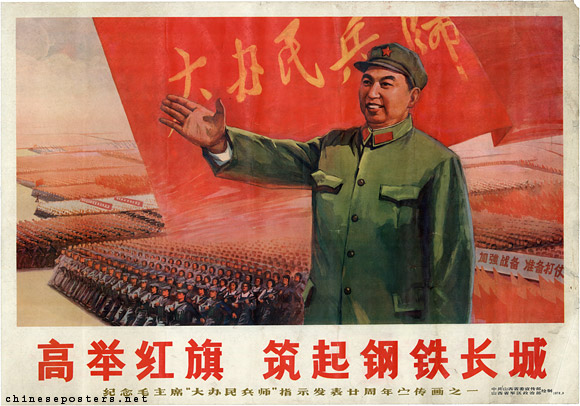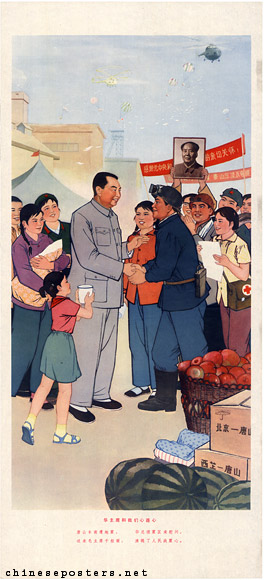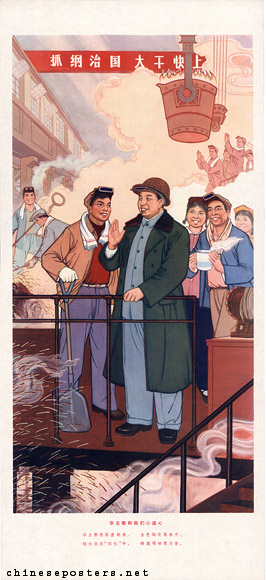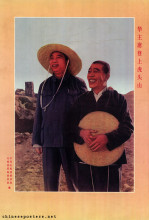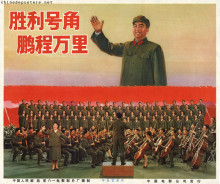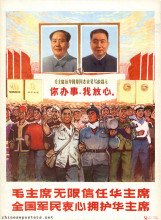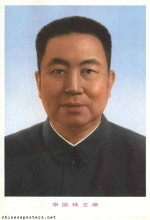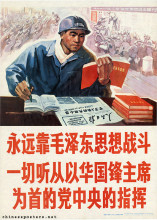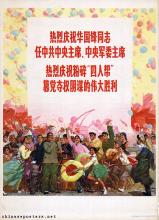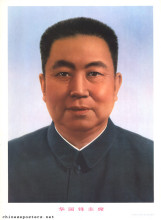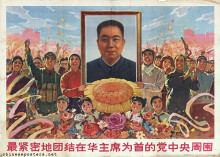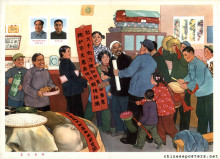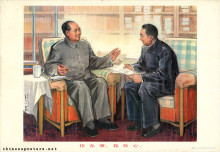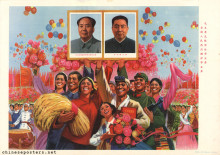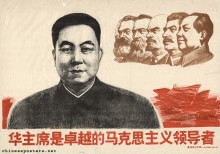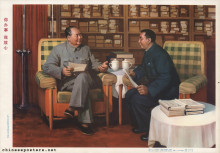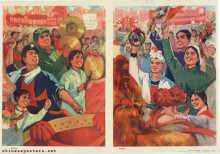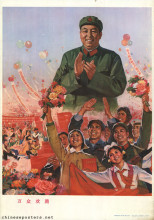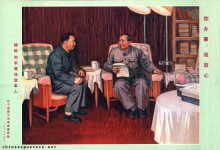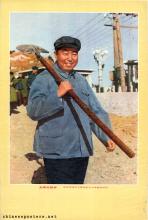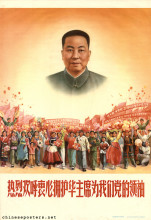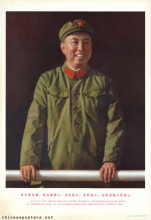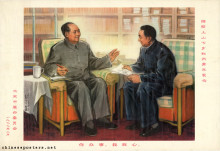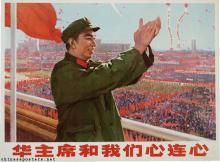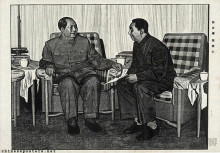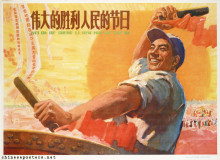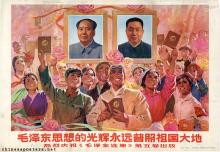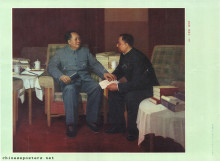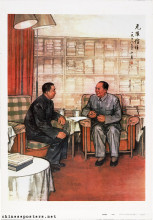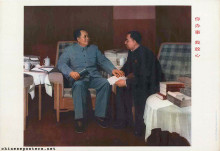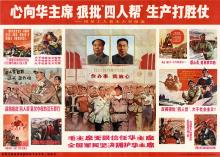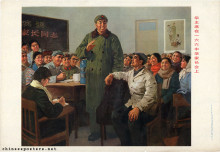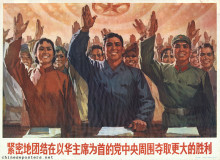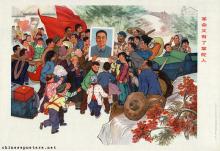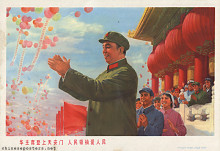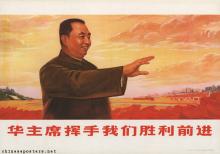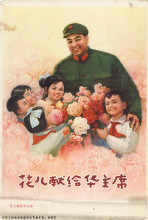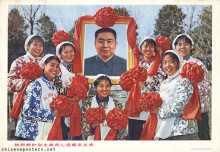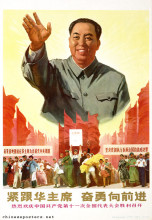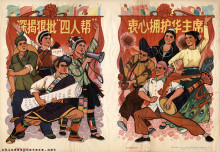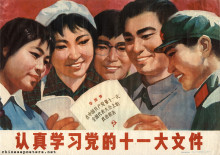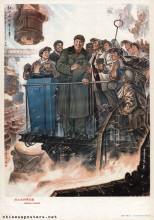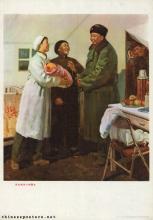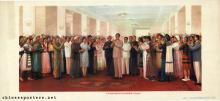Even before Hua had secured his power after Mao's death, the propaganda apparatus worked overtime to produce images of him, in order to familiarize the Chinese people with their new leader - and create popular support for him in his struggle with Jiang Qing and the Gang of Four. As a result, Hua seemed to try to surpass the number of posters that had been published to bolster his predecessor's cult in a relatively short time.
Hua's image was everywhere, and he was shown in every imaginable situation. It did not really matter whether Hua actually had engaged in every activity that was re-created on posters, or had visited the spots where he was shown, or really had met the people he was depicted with.
What mattered most was that Hua was portrayed as a hands-on leader, committed to the ideals and the pet projects of Mao. The fifth volume of the Selected Works of Mao Zedong, which appeared in 1977, was one example of the way in which Hua attempted to bolster his own reputation as true successor. Showing his support for Maoist models such as Daqing and Dazhai was another. His true proletarian feelings were illustrated in endless numbers of posters that showed Hua meeting with representatives of minorities, or posters that illustrated the minorities' boundless love for their new leader.
